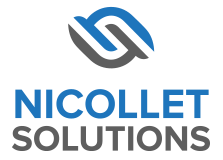Reverse Logistics has become a more important and more understood function in businesses over the last few years. As return volumes increase and customer expectations rise, leaders must understand this portion of their business in order to avoid erosion of profit. This article will discuss the definition of reverse logistics, highlight why reverse logistics needs to be optimized, and highlight the key components that make up reverse logistics.
What is Optimize Reverse
Optimize Reverse
Reverse Logistics has become a more important and more understood function in businesses over the last few years. As return volumes increase and customer expectations rise, leaders must understand this portion of their business in order to avoid erosion of profit. This article will discuss the definition of reverse logistics, highlight why reverse logistics needs to be optimized, and highlight the key components that make up reverse logistics.
Reverse Logistics Defined
While there are many academic and industry definitions of reverse logistics, a practical conceptual definition is “all policies, processes, and systems that manage product from after the initial sale and delivery, to the final destination of the unit”. The elements include:
- Developing and executing return policies
- Managing trade in and recycle programs
- Managing return reduction efforts
- Transporting and handling the unit
- Assessing the condition of the unit
- Developing and maintaining disposition logic to send the unit to the optimal sales channel
- Developing and managing refurbishment and repair capabilities
- Managing supplier relationship and partnership
- Managing and developing channels to sell these goods
- Managing pricing and merchandising functions for the sales channels
- Tracking and managing the inventory in the entire reverse pipeline
- Certification of partner compliance
Why Reverse Logistics in Important Today
As retailers invest in trends like fulfillment capabilities, sustainability practices, employee training and retention programs, and experiential retailing, there is an increasing need to find ways to fund these investments. In most organizations, reverse logistics is an under optimized function that can drive profitability to the bottom line. By proactively addressing the opportunity they can have the necessary financial resources to fuel their growth and/or survive the changing demands on their business.
Components of Reverse Logistics
In order to accomplish the optimization of reverse logistics, these four components should be addressed:
- Intake Management: This component includes management of all intake into the reverse pipeline whether the product is a customer return, a trade in, a recycle, or a warranty fulfillment unit. Policies and rules for accepting a unit must be clear and consistently enforced. This includes collecting meaningful data and ensuring the customer experience is positive. It also includes managing return reduction programs, and meeting the goals and KPI’s of the trade in, recycle and warranty programs.
- Supplier Programs: This component addresses how the risk and responsibility for returns and warranties are managed and shared between a retailer and a manufacturer. Scorecards and KPI’s are required to effectively communicate and ensure trust between organizations. This trust enables a high level of performance in service of the end customer as well as enables reduction of costs for both organizations.
- Operational and Systems Capabilities: This component includes operational and system capabilities that enable product to be physically and systematically processed and routed to the best sales channel. It includes having a well-designed reverse network and product flow, sophisticated disposition logic, forecasting capabilities, inventory pipeline management, 3rd party management, condition assessment capabilities, and refurbishment capabilities.
- Disposition Optimization: This component includes the ability to match the incoming supply of goods to the optimal sales channel. It requires the ability to know the recovery of a specific item in a given condition in each channel based on available inventory and market trends. The capacity of each sales channel must be understood and the cost of each sales channel must be taken into account when recovery rates are forecasted and a disposition decision is made.
It is critical for leaders to understand the material opportunity effective reverse logistics presents to their organizations and ensure that they address all four components to realize maximum benefit.



Leave a Reply